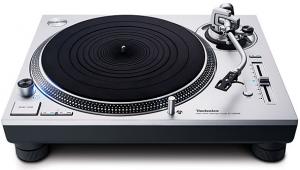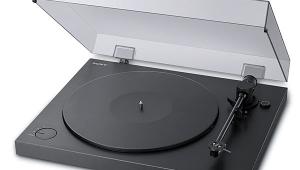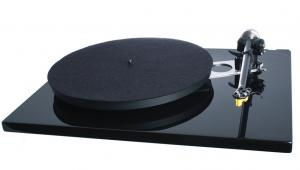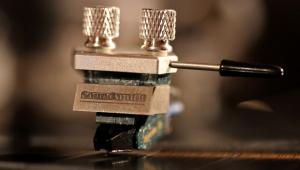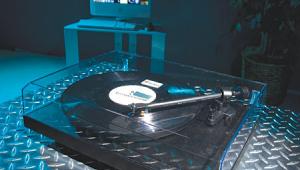Test Report: Pro-Ject Debut Carbon Turntable
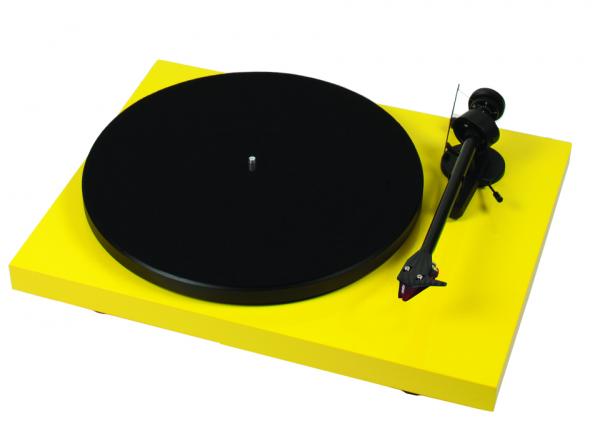
Carbon fiber is included in all sorts of products, sometimes for absurd and cynical reasons. My Philips Arcitec electric razor, for example, has carbon fiber trim on its sides. The carbon fiber doesn’t lighten or stiffen the razor, much less improve my shave. It merely adds cachet. Call me unromantic, but I don’t need my razor to evoke images of F1 cars and high-tech jets.
So why should you care that Pro-Ject dolled up its new Debut Carbon turntable with a carbon fiber tonearm?
A quick trip to the golf section of your local sporting goods store can tell you. Tap on the side of a metal golf club shaft and you’ll hear it ring. Tap on the side of a carbon fiber golf club shaft and you’ll hear nothing but a soft click. With this simple test, you can understand the advantages of the Debut Carbon over Pro-Ject’s less expensive Debut III.
The slightly tapered carbon fiber tube that forms the Debut Carbon’s tonearm is almost entirely non-resonant, so it doesn’t substantially affect the turntable’s sound. But the straight aluminum tube used on the Debut III’s tonearm has some resonance, which can add its own sonic signature. The “deadness” of the Carbon’s tonearm also damps vibration.
Pro-Ject didn’t just splice a piece of carbon fiber tubing into the Debut III’s tonearm. The designers really outdid themselves — the tube’s woven fiber is pressed flat to form the cartridge mount, with a slim finger lift molded from the same piece of carbon fiber.
The Debut Carbon includes more upgrades from the Debut III. Most significant is an Ortofon 2M Red moving-magnet cartridge, which costs $99 when purchased separately. That’s a step up from the Debut III’s stock $59 Ortofon OM-5e cartridge. The Carbon also has a platter that’s 20mm larger in diameter (and significantly heavier) than the Debut III’s.
Plus, the Carbon has two RCA output jacks and a ground terminal on the rear, while the Debut III’s cables are hard-wired into the plinth. Those who are into swapping cables in pursuit of better sound will rejoice. The rest of us will have the comfort of knowing we can easily change the cables if they malfunction.
The Debut Carbon is just $399, while the Debut III now sells for $329. Even the most parsimonious audiophile would cough up the extra $70 for all those upgrades, but still, I wondered what affect said upgrades might have on the sound.
Setup
Setup of any turntable is relatively complicated, but Pro-Ject makes it as easy as possible by shipping the Debut Carbon with the Ortofon 2M Red cartridge preinstalled. I checked the cartridge’s azimuth (left-right tilt around the tonearm’s axis) and alignment, and found that both were adjusted well enough that I didn’t need to mess with them. Vertical tracking angle (VTA) — the angle at which the tonearm sits when it’s resting on a record — isn’t adjustable, which some could consider a downside. But VTA isn’t adjustable on the Rega RP6 I tested for the June/July/August issue, and the RP6 sounds awesome.
You do have to install the drive belt, the platter, and the felt mat, but those tasks are no tougher than snapping a jazzy new case onto your iPhone. You also have to install the counterweight at the end of the tonearm, then set the vertical tracking force (VTF). That’s more complicated, but the manual deftly guides you through the steps. Using my Shure SFG-2 gauge, I set VTF at the required 17.5 millinewtons (1.75 grams). I then installed the anti-skate weight and was ready to spin.
I used the Debut Carbon in a stereo system with a Krell S-300i integrated amp and Krell Resolution One tower speakers, and also auditioned it in a headphone rig with HiFiMan’s HE-6 headphones and EF-6 headphone amp. I used an NAD PP-3 phono preamp. I didn’t have a Debut III on hand for comparison, but I did have the next best thing: my Pro-Ject RM-1.3 turntable, which at $499 is a modest step up from the Debut Carbon. In my review of the RM-1.3 on soundandvisionmag.com, I found it sounded much better than my OM-5e-equipped Pro- Ject One, the Debut III’s barely different forebear.


